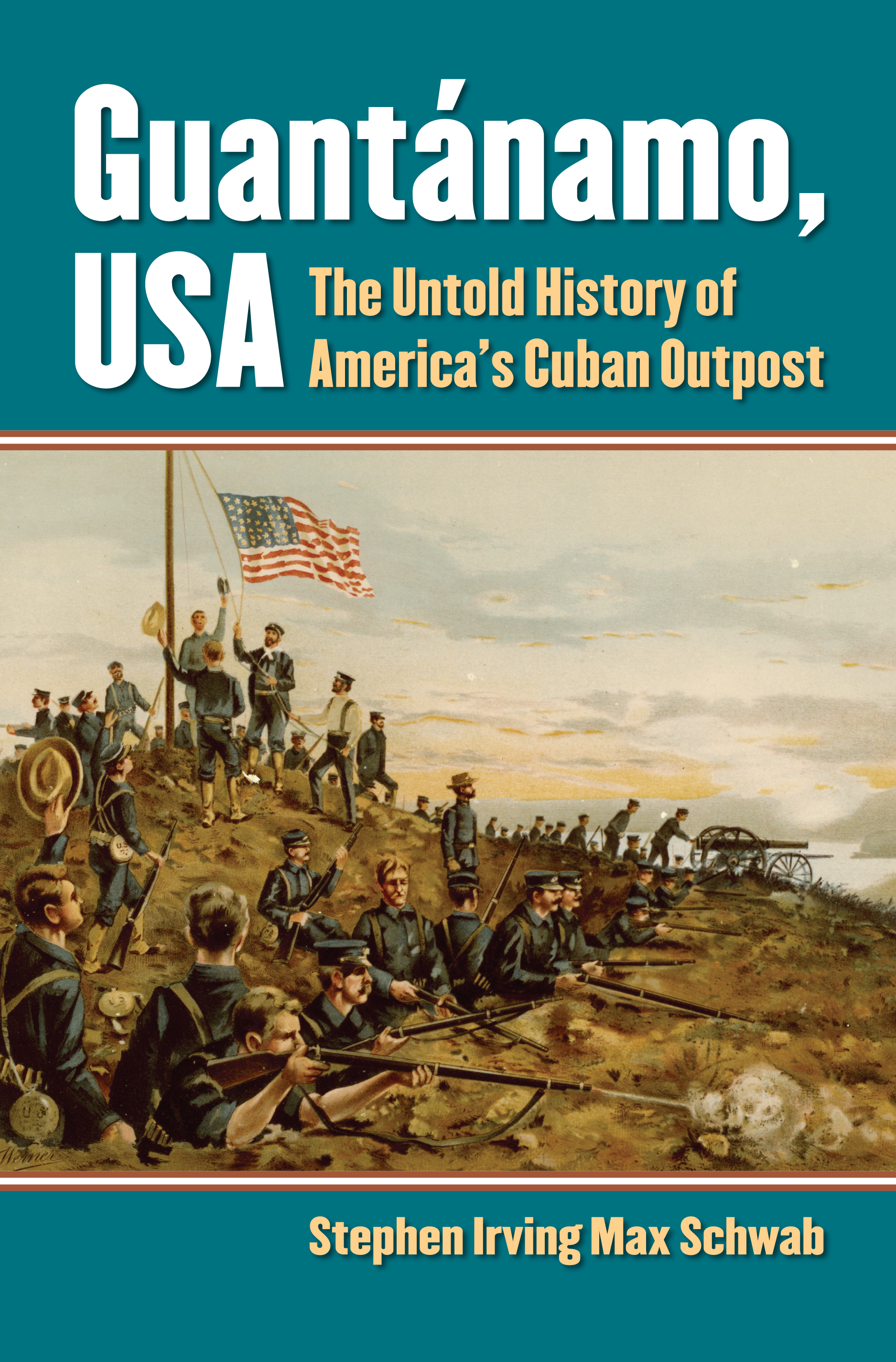Guantanamo Bay has become one the most infamous places on earth. In the United States and across much of the globe many see Guantanamo Bay as synonymous with everything wrong with the Bush Administration's "War on Terror:" habeas corpus violations, human rights violations and torture

Few, however, have any sense of the history of Guantanamo Bay, how the United States came to own a piece of Cuba, and how that naval base has functioned over the past century.
Stephen Irving Max Schwab seeks to uncover and give voice to the complete history of the installation that is largely absent from historical scholarship and political debate.
The work begins by recounting the rise of the United States Navy and the role of Theodore Roosevelt in its ascent. Roosevelt was fascinated by naval power and pressed for Americans to update the naval fleet and other naval technologies. During the last two decades of the nineteenth century, presidential administrations, Republican and Democratic, supported strengthening the navy. Government officials recognized the importance of naval bases in strategic positions in the Caribbean, primarily in order to facilitate growing trade to emerging markets. Schwab positions the decision to pursue a naval base at Guantanamo in this process of creating a stronger U.S. Navy; a base at Guantanamo would help ensure, in Roosevelt's mind, the creation of a modern and more well-rounded military with an enduring presence in the Caribbean (27).
The opportunity to create such a naval presence in the Caribbean came when the United States invaded Cuba – then a Spanish colony - in the summer of 1898. The Spanish-American War enabled the United States to establish the permanent military base at Guantanamo.
Across the twentieth century, Guantanamo's many uses have included being a coaling station, a ship repair point for the American naval fleet, a naval launching point into the treacherous Atlantic during the Second World War, a point from which to facilitate hurricane relief throughout the Caribbean, and as an incarceration center for suspected terrorists.
Along with these functions, Schwab argues that Guantanamo was a sight of mediation from its earliest days, and that that role took on new importance in the middle of the twentieth century because the base was one of the only places that the United States and Cuba were able to engage each other during the years after the 1959 revolution in which the Castro brothers rose to power. It continues to be a place of mediation to the present day as one of the few places Cubans and Americans interact on a regular basis.
Not surprisingly, the majority of the book is devoted to the first six decades of the twentieth century. During the Cold War, Americans viewed Cuba with trepidation. The revolution of 1959 ensured the institution of a communist regime that was frightening to the United States. (186). Two of the eight chapters are reserved for the history of Guantanamo during the height of the Cold War, under the Eisenhower, Kennedy, and Johnson administrations. Schwab's treatment of the Cuban missile crisis in 1962 is surprisingly cursory, though he acknowledges it played only a minor role in those events. More than anything, Guantanamo functioned as an annoyance to Castro who demanded normalized relations between the U.S. and Cuba, the American presence at Guantanamo had to cease immediately (210).
Although much of the work is concentrated during the middle of the twentieth century, Schwab does not neglect bringing the story to the present. It continues to be a place of mediation even though relations between the US and Cuba remain strained. Today, Guantanamo is the only place on the island of Cuba that one can watch television beyond the state sponsored channels, American television that has even helped some of the Cuban workers at Guantanamo learn English (14).
Guantanamo, USA's publication in late 2009 contributes to the current debate about Guantanamo, one discussed extensively in the last presidential election. Many Americans perhaps would be surprised to learn that the terms of the debate have changed, but that debate about Guantanamo is anything but new. This enlightening work helps the reader better understand the role of Guantanamo in American and Cuban history. Schwab should be applauded for his efforts to uncover the largely misunderstood or forgotten story of the American presence in Cuba – a presence that has often been met with highly critical stances. He should also be applauded for his engaging, readable, and detailed writing style. His clear voice speaks authoritatively about Guantanamo, filling a void he believed troublesome. Clearly Schwab researched this topic thoroughly and has produced a masterfully written narrative useful to historians and the interested public at large.
